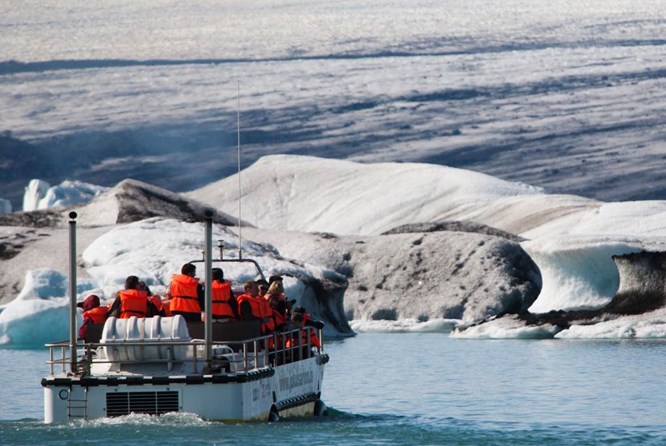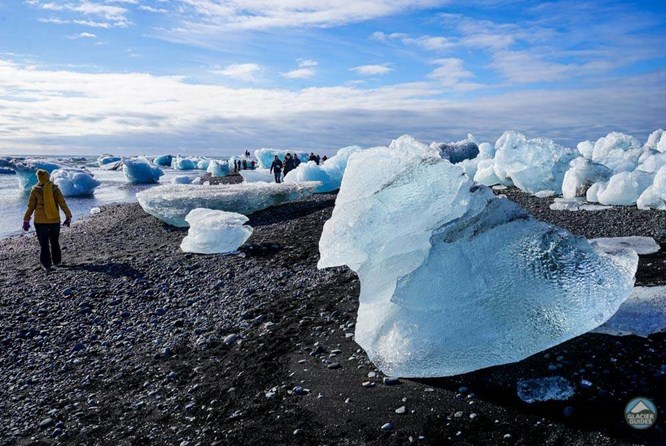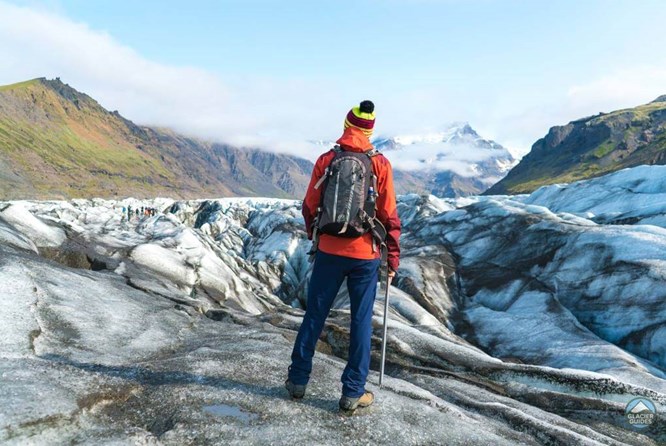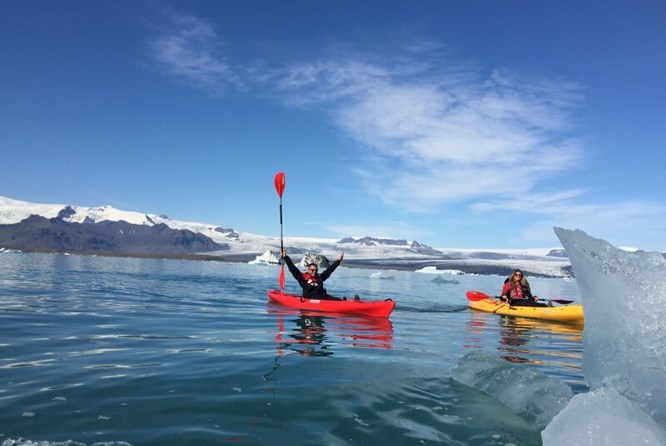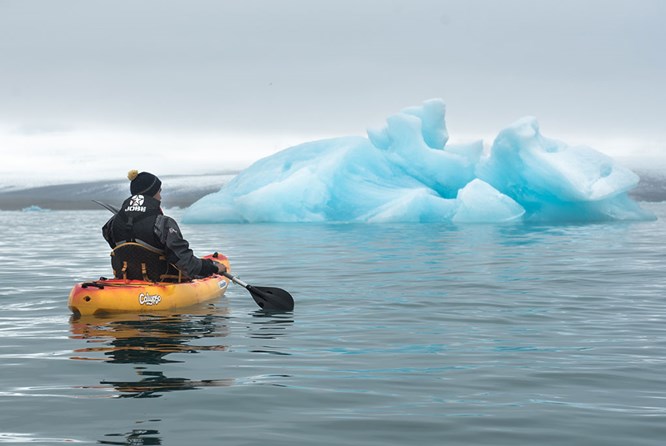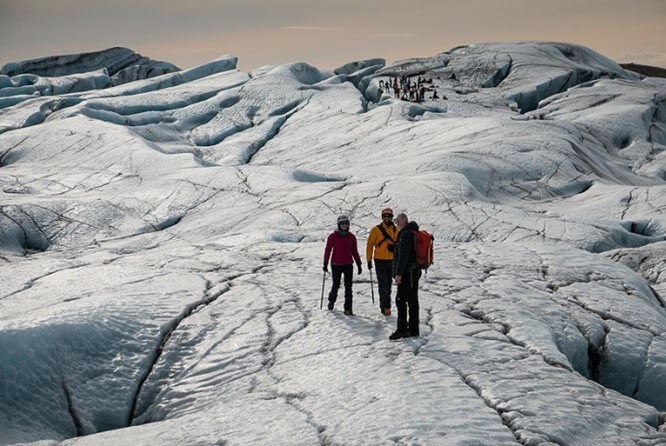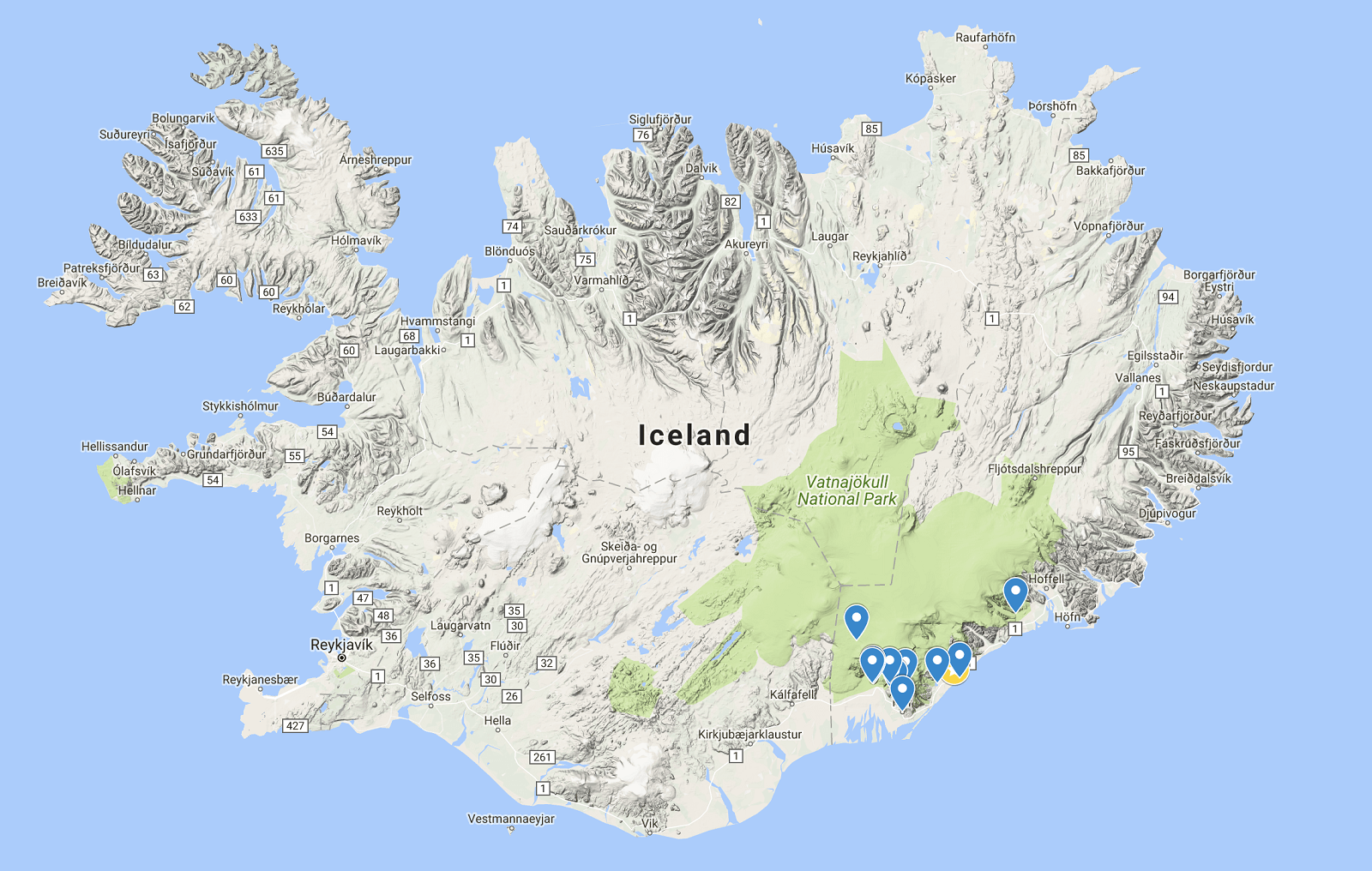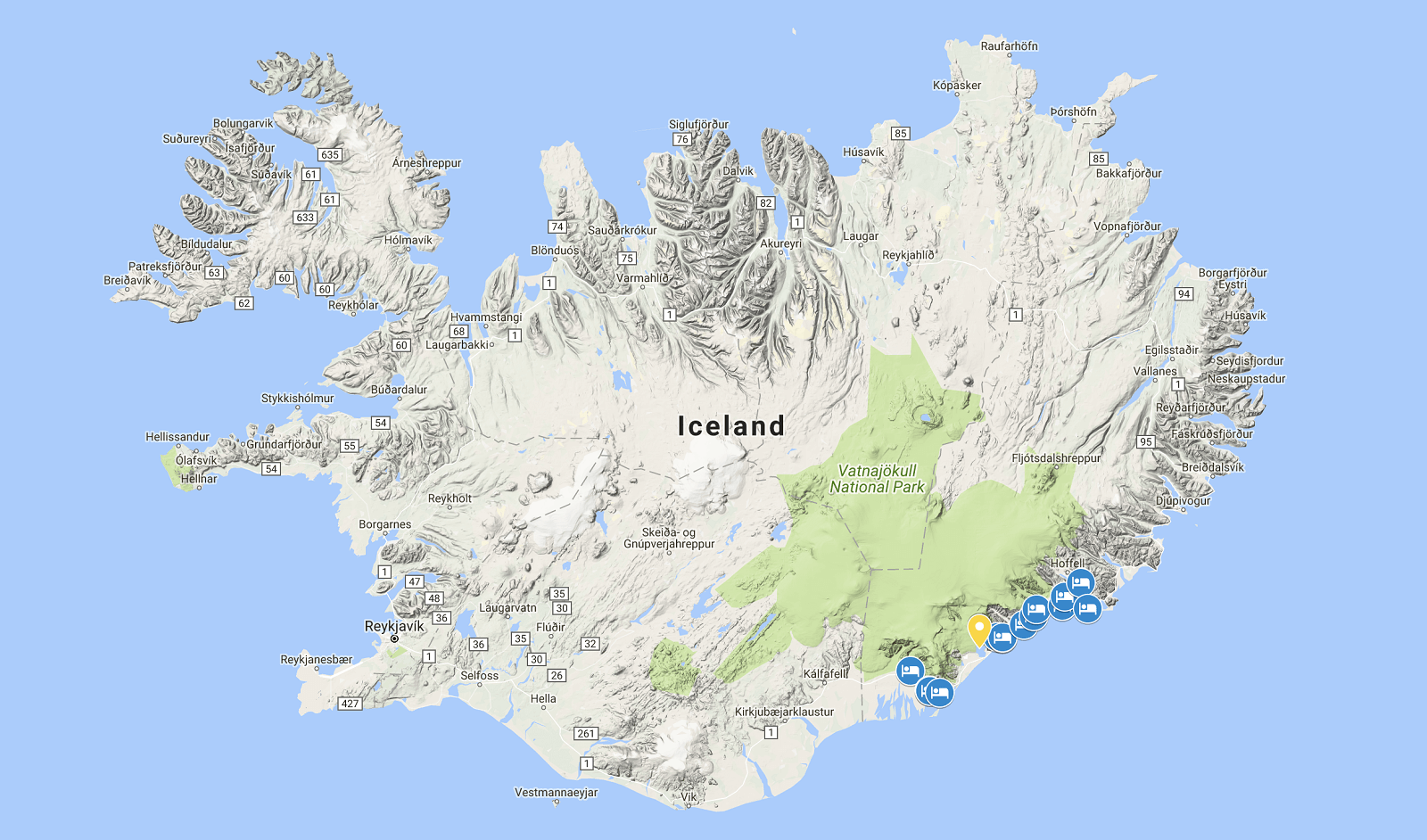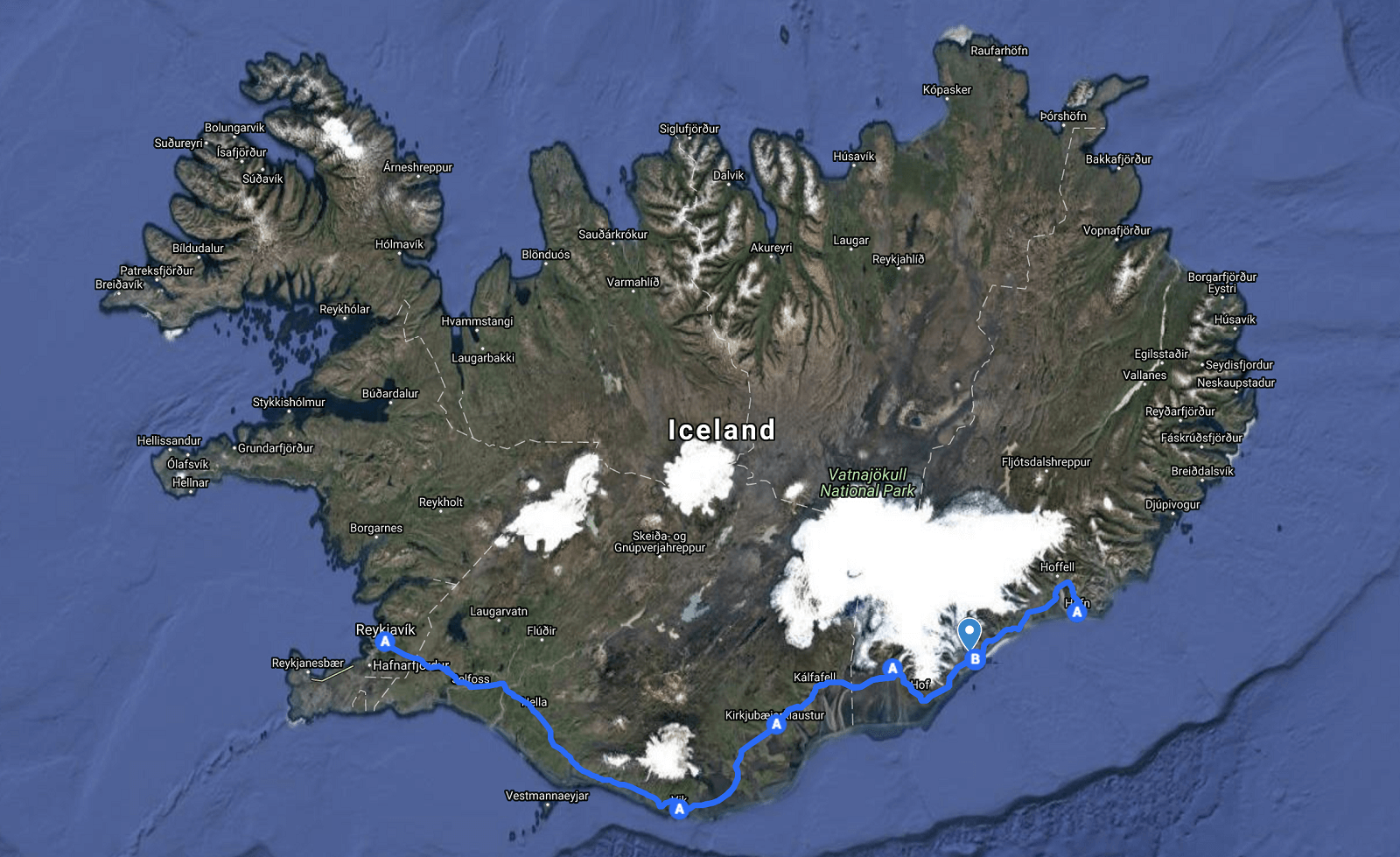Jokulsarlon Glacier Lagoon is located in Southeast Iceland and is truly a unique natural wonder. It's one of Iceland's and the world's must-see place. Experience the floating icebergs and the magnificent Vatnajokull glacier. See a list of tours and excursions departing from the glacier lagoon here below.
Browse our selection of glacier tours from and to Jokulsarlon, and on other glacier lagoons
-
Ice Caving from Jokulsarlon
-
Boat tours on Jokulsarlon
-
Tours from Reykjavik
-
Kayaking in the area
-
Boat Tours on Fjallsarlon Lagoon
-
Guide To Jokulsarlon
Ice Caving Tours from Jokulsarlon Glacier Lagoon
Go spelunking with Ice Caving Tours from Jokulsarlon. Explore the Crystal ice Cave Tour on our tours with pickup included from Jokulsarlon Glacier Lagoon. An ideal add-on to a self-drive package.
Boat Tours from Jokulsarlon Glacier Lagoon
Dive right in one of Iceland’s greatest natural treasures with a Jokulsarlon Glacier Lagoon boat tour. Choose from a Zodiac boat tour or an Amphibian boat tour and cruise past the glittering icebergs.
Tours from Reykjavik to Jökulsárlón Glacier Lagoon
Add to your weekend getaway to Iceland with a tour of Jokulsarlon Glacier Lagoon from Reykjavik. Choose from a full day of Jokulsarlon and the Diamond Beach, or book a multi-day package that includes in-depth expeditions to ice caves, Snaefellsnes Peninsula, Golden Circle, Northern Lights, or the awesome South Coast, all with a pick up from Reykjavik.
Kayaking on Jökulsárlón & Heinabergslón Glacier Lagoons
Explore peaceful glacier lagoons by kayak and glide in between majestic icebergs. Delve into the hidden gem of Heinabergslon or traverse the Jokulsarlon Glacier Lagoon by kayak.
Boat Tours on Fjallsarlon Glacier Lagoons
Seen Jokulsarlon and looking for something unique? Hop on a Fjallsarlon Boat Tour, and admire this smaller, but no less wondrous, glacier lagoon.
The Ultimate Guide To Jokulsarlon Glacier Lagoon
What Is Jokulsarlon?
Video From: Jokulsarlon Glacier Lagoon | Amphibian Boat Tour
Jokulsarlon Glacier Lake is the crown jewel of the scenes and landscapes in Iceland. As a must-see attraction, the glacier lagoon is on the top of many travelers’ bucket lists, especially for those who travel in South Iceland.
The name “Jokulsarlon” in Icelandic literally means “glacier river lagoon” in English. Sitting on the southeast rim of Iceland, the water comes from Breidamerkurjokull glacier, one of the glacier tongues from the overwhelming Vatnajokull glacier. And Vatnajokull is the most voluminous glacier in Europe.
Jokulsarlon changes slowly but constantly. Everyone will see a different version at a different time. The geological story behind the beautiful glacier lagoon has a tint of nostalgia if you think about how the glacier ice was created and then vanished over time.
How Was Jokulsarlon Formed
When the first Viking settlers came to Iceland around 870 AD, the glacier lagoon did not exist. At that time, Breidamerkurjokull glacier was located about 20 kilometers (12 miles) north from its present location. Later, the Little Ice Age came. Between the 17th century and the 20th century, Breidamerkurjokull glacier increased its ice cap by one kilometer. The glacier tongue nearly reached the coast.
The clock continued to tick. When the time passed the beginning of the 20th century, the temperature began to rise. Some parts of the glacier started to calve and break away from the glacier. The ice chunks crashed together at the toe of Vatnajokull and formed a lagoon.
Now, Jokulsarlon Glacier Lagoon is the deepest lake in Iceland. It has a depth of 248 meters (814 feet) and covers an area of 18 sq-km (7 sq-mi). And it continues to expand.
Many huge icebergs float around in the lagoon, creating a surreal natural wonder of the world. As time goes by, the huge icebergs will break into smaller pieces, and eventually, they will melt into the lake and rush through the opening to the Atlantic Ocean.
The various sizes of the icebergs represent the different phases of their existence. When one iceberg shrinks down to the size of a fist, it’s the sentimental end of the thousand-year formation.
On their way out to the ocean, many ice chunks are stranded sporadically on the beach of the glacier lagoon. When the sunlight radiates through the ice, it transforms into countless iridescent gems that spread on the black sand. This is why people call it “the Diamond Beach.”
The Diamond Beach

The Fascinating Diamond Beach At Jokulsarlon Glacier Lagoon
Over the centuries, Breidamerkurjokull, Fjallsjokull, and Hrutarjokull formed a glacial outwash plain next to the ocean. It’s the pitch black Breidamerkursandur, where the beautiful Diamond Beach belongs to. The black sand beach stretches about 18 kilometers along the South Coast, and it’s one of the most popular attractions in Iceland.
The huge chunks of ice in Jokulsarlon glacier lagoon often got polished by the water and then washed ashore. The iridescent ice pieces are laying on the beach in stark contrast with the pitch blackness forming a dramatic scene. The icebergs of different sizes and shapes can have multiple colors. They can be blue, black, transparent or white. They look more like a collection of natural gemstones scattered on a black velvet carpet.
Because of the dazzling icebergs, the rich wildlife, and the neat location, the Diamond Beach is a heavenly place for photographers and nature lovers.
The Blue Icebergs And The Black Stripes At Jokulsarlon
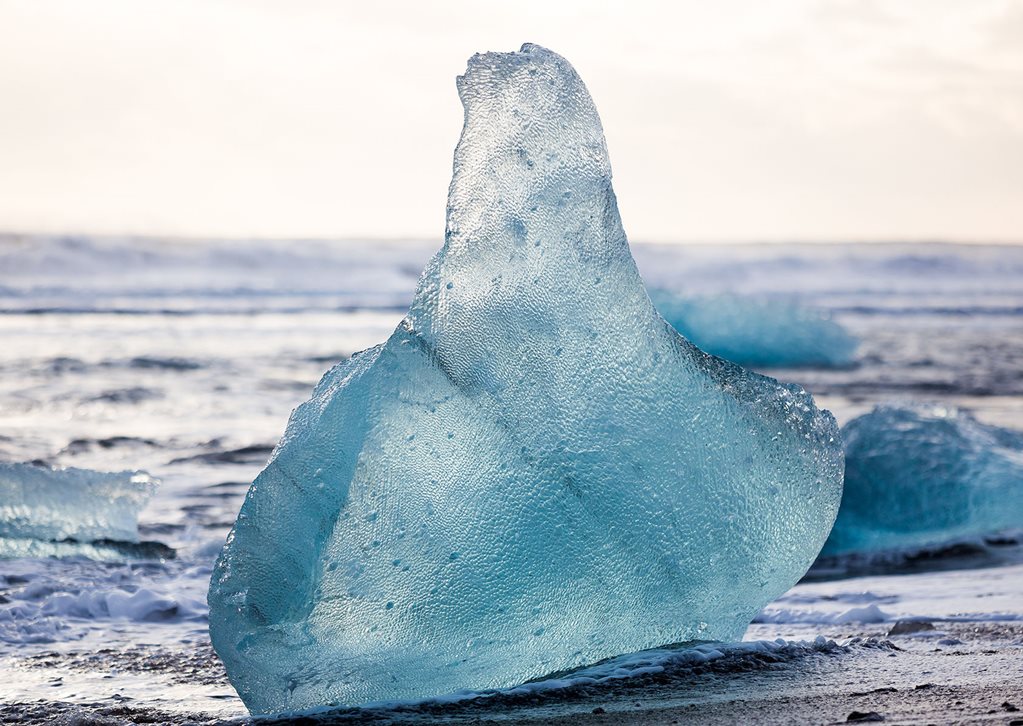
Mesmerising Shades Of Blue At Jokulsarlon
Many visitors are fascinated by the shades of blue in the icebergs. And you might wonder why some icebergs are blue and others are white. The mechanism behind the color scheme of a piece of glacier ice is that it depends on the texture.
The glaciers begin to form when snow remains in the same area all year round. So, when the snow accumulates to a certain quantity, it will transform into ice. Snow looks white because it contains air, which reflects and scatters the full spectrum of light. The human eyes perceive this as “white.” When enough snow compresses and re-crystallizes, it forms ice grains. Those grains keep growing larger and larger, and the air is compressed out. After at least hundreds of years, the glacier ice finally forms.
Since there are no air bubbles in the ice, the light can enter the ice without disturbance. The ice absorbs the light of the long-wave red spectrum six times more than of the blue spectrum. So, the deeper the light travels inside the ice, the more red spectrums it loses along the way. The absence of the reflected red waves in the ice makes the human eyes perceive the “color” of the ice as blue.
When part of the glacier ice breaks away and drifts on the water, the part above the water begins to melt. The air then enters the iceberg. As more air goes inside the ice, the ice will look less blue. Meanwhile, the underwater part of the iceberg hasn’t been exposed in the air yet. When it tips over, it will still look blue. This is why the icebergs are constantly changing color. It’s a beautiful interaction between light, air, and ice.
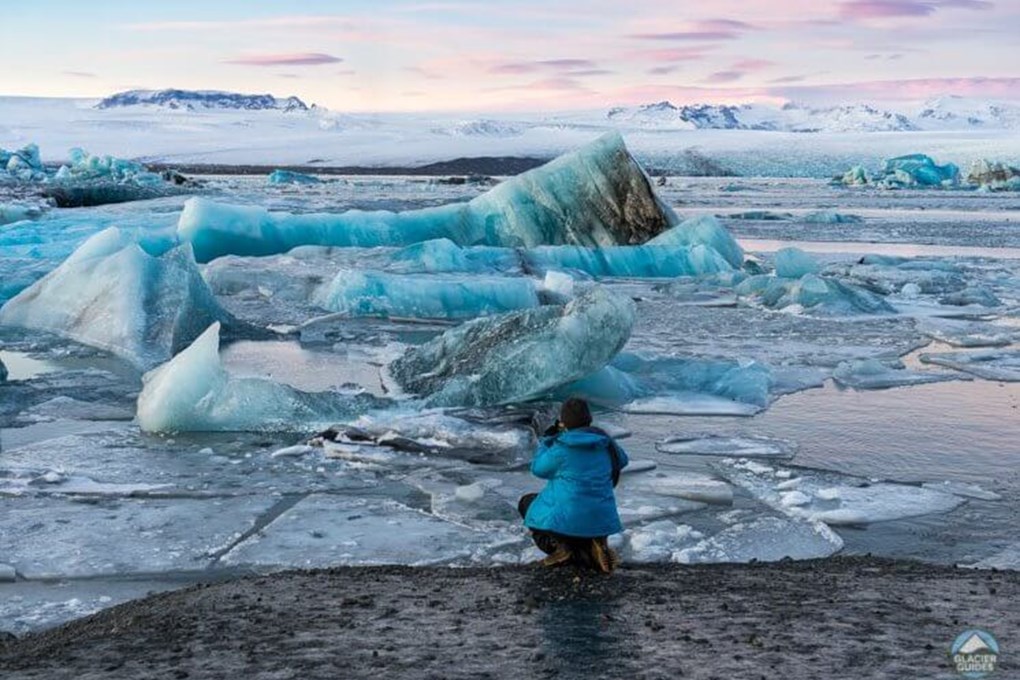
Beautiful Stripes On The Glacier Ice At Jokulsarlon
Speaking of colors, we can also see some black, brownish or even greenish stripes on some huge icebergs in Jokulsarlon glacier lagoon. Those natural patterns are unique to Iceland since the thick black layers came from the ancient volcanic events. Each layer could represent a violent eruption in the course of the Icelandic geological history. The brownish layers were due to the sediment adhered on the glacier ice chucks when they were sliding downhill. The sediment could also have seeped into the glacier cracks as it formed. For the greenish stripes, although rare, they were formed when the algae-rich seawater freezes on the underside of the iceberg.
These are all natural phenomenon you would find in Jokulsarlon.
Wildlife at Jokulsarlon

Wildlife At Jokulsarlon
Although cold, many kinds of wildlife choose to call the glacier lagoon home. The water in the lagoon is not only running one way straight out to the ocean. The ocean tides also bring in some species of fish, such as herring and capelin. They make the lagoon a decent place to nestle.
You can see Arctic Terns, Great Skua, and Seagulls. In some rare occasion, the Roseate Tern can be spotted in the area.
Jokulsarlon is also a favorite lagoon for the seals to swim around. The seals can be seen in the lake or by the coastline. These relaxing sea animals joyfully add some vividity to the glacial ambiance.
To see the stunning icebergs and the wildlife in the glacier lagoon, you can book an amphibian boat tour or sign up for a Zodiac boat tour. The boat tour will take you to see some of the largest floating icebergs in a close range. It will be a magical moment for the nature lovers and travel enthusiasts.

Looking At A Seal Relaxing On An Iceberg During A Lucky Zodiac Boat Tour
Jokulsarlon As A Filming Location
Die Another Day (2002): Movie Clip At Winter's Jökulsárlón Glacier Lagoon Visit Here In Winter
The beauty of Jokulsarlon has attracted many international film crews over the years. They came here to highlight their project with a pure, arctic sensation.
“Die Another Day” and “A View To A Kill” are two James Bond movies that had scenes at the glacier lagoon. The action-adventure film Lara Croft: Tomb Raider also did some scenes here. Jokulsarlon is also a romantic spot for filming music videos and commercials. Many directors came here to look for a natural, artistic perspective. The different energy and the beautiful set have inspired many creative minds from all over the world.
When Is The Best Time To Visit Jokulsarlon?
Summer
The most exciting time to visit Jokulsarlon is in summer. The higher temperature at this time of the year makes the melting process of the glacier ice more intense than in winter. The warmer weather calves more ice. Then, a large number of icebergs will fill the lagoon, making it a dreamlike wonderland. So visiting between April and October is highly recommended.
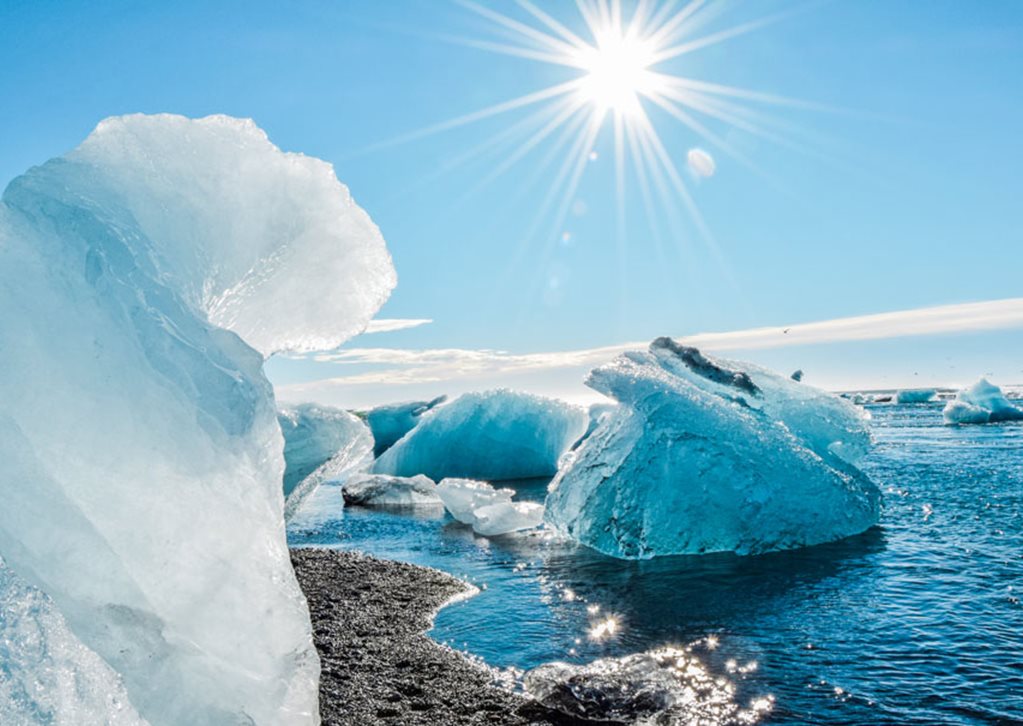
Jokulsarlon Glacier Lagoon On A Sunny Summerday
Also, the summertime brings a lively ambiance to the lagoon. There are different types of boat tours operating between June and September. On board a boat in the serene lake, you will have a refreshing perspective to observe the sheer beauty of the floating glacier ice.
The summer is also a fun time for the Arctic Terns, one of the seabirds that nest nearby. These birds tend to be very protective of their younger ones. When they sense you are getting close to their nests or their little ones, they will hover above your head and make a loud sound warning you to back off. It’s quite an extraordinary experience when you immerse yourself in the pristine nature of Jokulsarlon glacier lagoon.
Winter
Jokulsarlon glacier lagoon opens to visitors all year round. In the wintertime, the glacier lagoon has a peaceful vista. The migrating birds have gone to the south, and the boat tours are paused. The lake will finally resume to the state of stillness. Some part of the lagoon will be covered by a thin layer of ice, which makes the icebergs difficult to drift. Meanwhile, the ice calving process will slow down when the weather gets cold.

The Serene Jokulsarlon Glacier Lagoon In The Wintertime
In the wintertime, the coldness and the short daylight make the entire area in a slow-motion spectacle. The “blue hour” is longer in winter. The lagoon becomes a surreal realm when the miraculous colors from the soft sunlight diffuse on the land. When the night comes, there’s a great chance you will see the wavering streaks of the Northern Lights far above the glacier lagoon.
When you come in winter, besides the peaceful lagoon, you can also visit the ice caves. The ice caves are formed in late fall, and they melt in spring. So they are only accessible in winter. Before you go to Jokulsarlon, knowing what is available in the area in different seasons is helpful for you to make the best of the trip.
Activities And Tours Around Jokulsarlon
Tours From Reykjavik To Jokulsarlon
The glacier lagoon is located in the southeast region of Iceland. When you start from Reykjavik, you need to travel along the Ring Road on the southern rim, where myriad stunning sights and unforgettable attractions await alongside. You will pass two gorgeous waterfalls, the volcanic black sand beaches, some enormous coastal rocks and sea stacks. They are backdropped by the endless ice-capped mountains and accompanied by the silver oceanic waves and the blue horizon of the Atlantic Ocean. It’s impossible not making any stop between Reykjavik and Jokulsarlon.
When you travel to the south, there are many classic multi-day trip plans for your reference. They are practical and popular among the travelers. The multi-day tours to Jokulsarlon cover almost all the highlights in South Coast including the fascinating Seljalandsfoss waterfall, the stunning Reynisfjara Black Sand Beach, and the incomparable panorama from Vik i Myrdal. They offer the most memorable experience to travel along the picturesque south section of the Ring Road.

Dyrholaey, One Of The Highlights In The Beautiful South Coast Of Iceland
The daylight is longer in summer, it’s good for a South Coast day tour. It can take you to the South Coast from and back to Reykjavik in one day. It’ll be a fascinating scene on your way back when the midnight sun hangs over the horizon glowing in radiance. However, the daylight is short during the wintertime, it’s best to break down the itinerary by days. By doing this, you will have the chance to appreciate the attractions with the best lighting condition. Winter is also the best time for ice caving tour and Northern Light hunting.
Visiting Jokulsarlon By Boat
Standing on the shore at Jokulsarlon is one option to see the ancient icebergs floating in the lagoon. A more interesting and intimate way to see the crystal blue or pure white ice is by boat. There are many kinds of boat tours available. They vary by boat type and the duration on the boat.
The Zodiac boat tour takes one hour from meeting at the base where you will be welcomed by the guides. After the safety instruction and equipment are distributed, you will start your adventure in the beautiful glacier lagoon with the experienced guides. Floating between the magnificent icebergs is one of the unforgettable experiences you must have in Iceland.
A shorter but also fun boat tour at Jokulsarlon is the amphibian boat tour. During this exciting excursion, you will sail among the huge icebergs in the surreal scenery of Jokulsarlon. More thrillingly, you get to hold a piece of thousand-year ice and taste it. You could also see the seals relaxing nearby if you are lucky.

The Icebergs Are So Close When You Are On Board A Jokulsarlon Amphibian Boat Tour
Another adventurous way to explore the mysterious Jokulsarlon is kayaking. Paddling in the pristine glacier lagoon, you will feel like a brave explorer experiencing a one-of-its-kind activity in the wild world. The kayak boats are usually Sit-On-Top boats. They are very stable and more suitable for the participants who have not done any kayaking before.
Above are the meet-on-location tours that have multiple schedules daily. If you are in the capital, you can sign up for a Vatnajokull Voyager day trip, it picks up in Reykjavik. This trip will take you to the miraculous Jokulsarlon, the stunning Diamond Beach and some of the most fascinating attractions in South Iceland.
Ice Caving And Glacier Hiking
Jokulsarlon is also a popular meeting point that leads to many activities like the mesmerizing ice caving and the exhilarating glacier hiking.
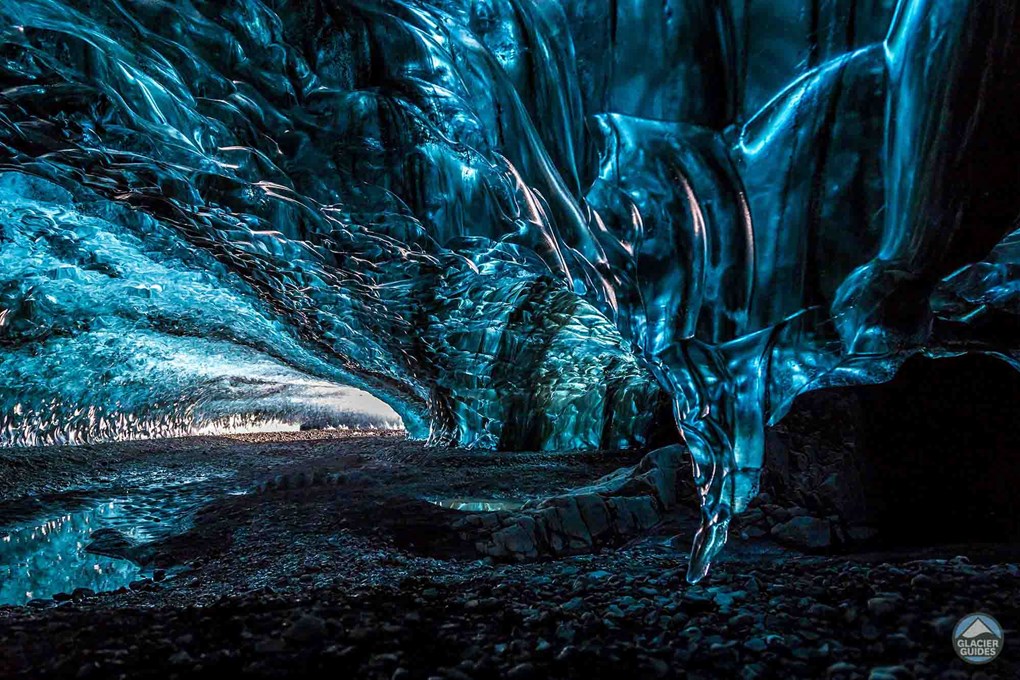
Inside The Magical Crystal Ice Cave In The Jokulsarlon Area
The natural ice caves are formed in the summertime when the glacial river runs through the glacier. When winter comes, the temperature starts to decrease, the glacial rivers have retracted and the water has frozen. The drained glacial river left the void with the blue crystalized ice walls and ceiling. Breidamerkurjokull glacier is home to some of the most beautiful ice caves in the world. The blue ice cave tour can’t be missed in the wintertime when you are traveling in South Iceland.
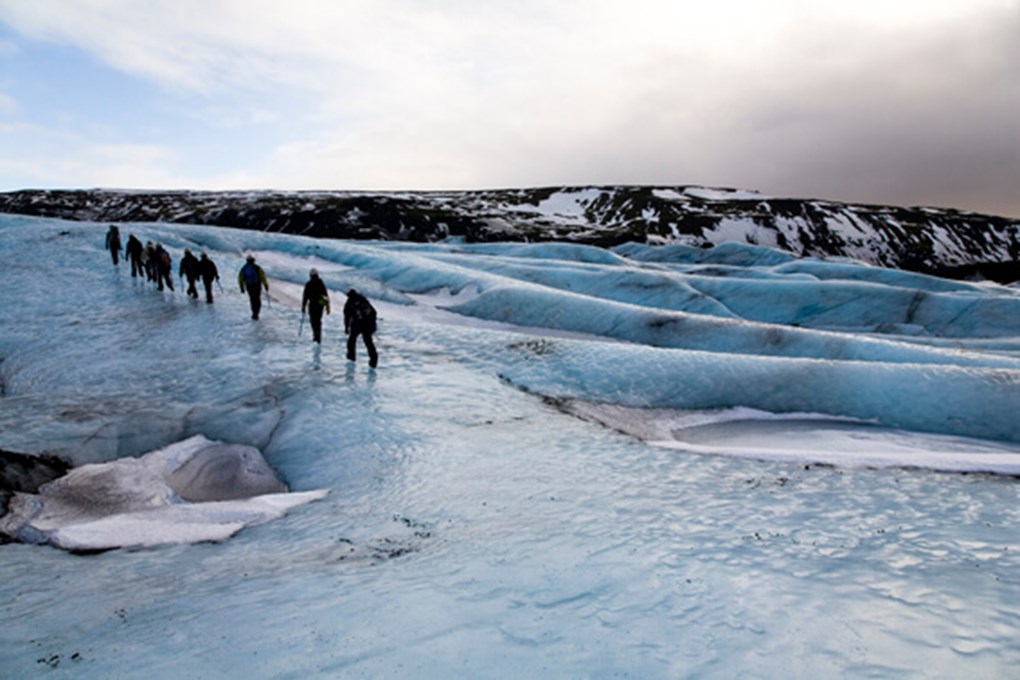
Hiking On A Magnificent Glacier Tongue Near Jokulsarlon In South Iceland
The glacier hiking activities are wildly popular in the lagoon area too. Many Vatnajokull outlet glaciers have created some of the most epic natural settings where the hikers can traverse on a guided trek.
Other Amazing Glacier Lagoons
Fjallsarlon Glacier Lagoon (Fjallsarlon)
Fjallsarlon is located in the south end of Vatnajokull National Park. It’s about 11 kilometers (6.8 miles) southwest to Jokulsarlon. You can find the lagoon at the foot of Fjallsjokull glacier, one of the glacier tongues in Vatnajokull. It’s 47 kilometers east to Skaftafell Nature Reserve.
Its Icelandic name literally means “mountain river lagoon.” Some may say that Fjallsarlon is Jokulsarlon’s muddy cousin. The reason for its muddiness is that the huge floating icebergs in the lagoon can disturb the lake bed, blending the mud sediment in the water. But, just like every snowflake is different, every glacier lake has its unique feature as well.
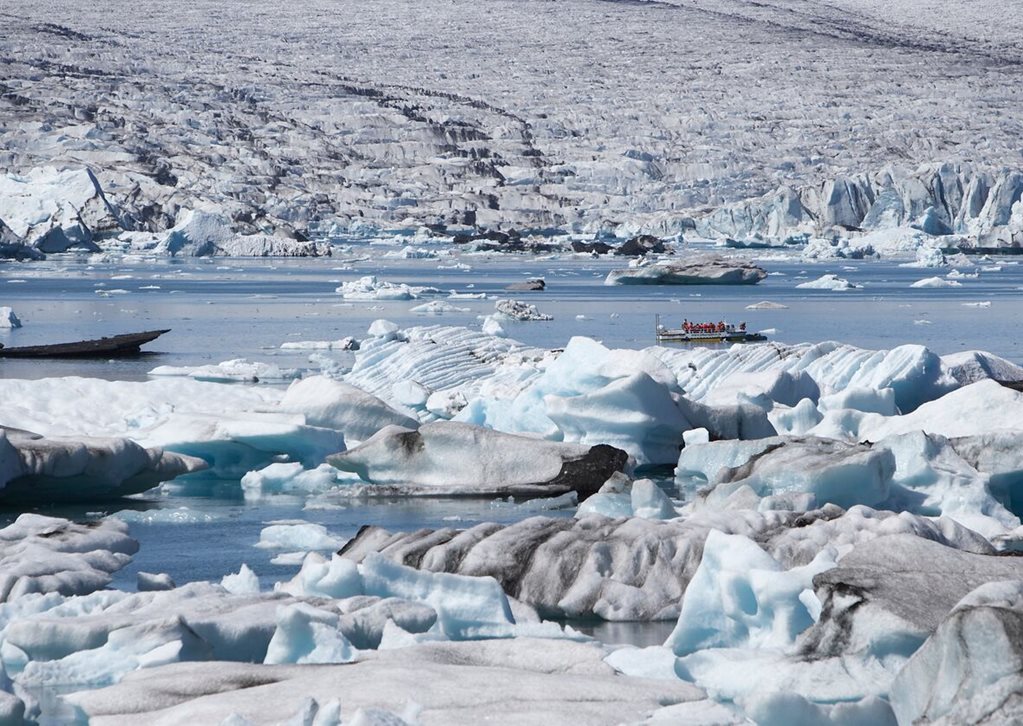
Observing The Glacier And The Icebergs On A Boat Tour At Fjallsarlon
Although the nearby Jokulsarlon is often considered the Icelandic crown jewel, Fjallsarlon glacier lagoon still stands out for several reasons. Jokulsarlon is more than five times bigger than Fjallsarlon. But, Fjallsarlon has a natural advantage of giving out a close feeling with the glacier tongue and the icebergs. The visitors can observe the mountains, the glacier, and the ice chunks in a close range. You can also sign up a boat tour and be close to the awe-inspiring icebergs.
Then, unlike Jokulsarlon, Fjallsarlon glacier lagoon is not directly connected to the ocean. The only channel for the water to go out to the ocean is a river. The river system has sculpted a veiny surface on the land if you look from a higher place.
These are the uncommon features Fjallsjokull has for the global visitors to see and experience. Also, it’s worth to note that there are fewer people in the lagoon area, it’s more likely for you to enjoy the view undisturbed.
Heinabergslon Glacier Lagoon (Heinabergslon)
The mighty Vatnajokull has numerous outlet glaciers. One of them is Heinabergsjokull. It’s located about 36.5 kilometers (22.7 miles) northeastern to Jokulsarlon. The calving process of Heinabergsjokull has created a glacier lagoon at its toe that is named Heinabergslon.
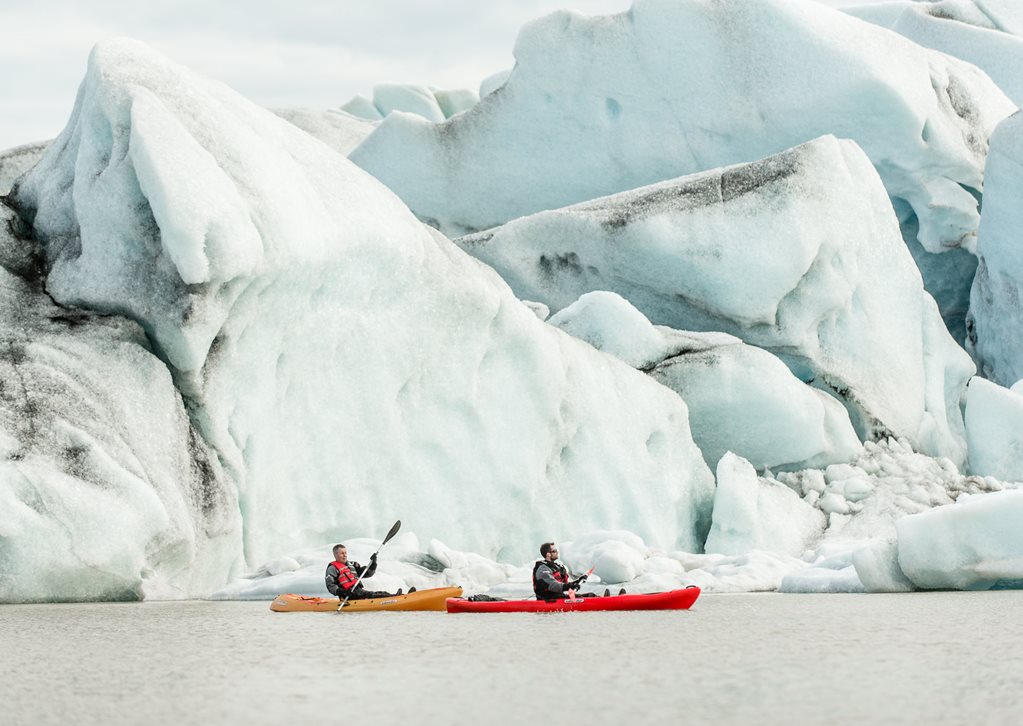
Kayaking In Heinabergslon Glacier Lagoon
This lesser-known glacier lagoon is hidden off the beaten road. The visitors need to take a short hike to get to the lakefront. Because of the isolation, Heinabergslon and its surrounding area are quieter than the well-known Jokulsarlon. This makes the kayaking and sailing tours highly enjoyable. Hardly ever will you see any crowd or any traffic. As a nice alternative to Jokulsarlon, Heinabergslon is perfect for a small group of people who are looking for solitude and tranquility in the stunning Icelandic nature. You will also find the vibrant wildlife in the vast quietness of Heinabergslon glacier lagoon.
Jokulsarlon Fun Facts And Nearby Beautiful Places
- Jokulsarlon is the deepest lake in Iceland, with a max depth of 248 meters (813.6 feet).
- The size of the lagoon is 18 sq km (6.95 sq-mi).
- Jokulsarlon was also known as “Breidamerkurlon,” which is after its mother glacier Breidamerkurjokull.
- After Jokulsarlon was formed, the water cut off the Ring Road and left it impassable. The people had to go a full North circle to reach Southeast Iceland. Later they built the bridge, making the Ring Road a circle again.
There are numerous beautiful places near the glacier lagoon that are worth a visit:
- The Diamond Beach
- The Crystal Ice Cave
- Hvannadalshnukur
- Vatnajokull National Park
- Fjallsarlon glacier lagoon
- Heinabergslon glacier lagoon
- Falljokull glacier
- Svinafellsjokull glacier
- Skaftafell Nature Reserve
- Hofskirkja church
- Svartifoss waterfall
Map Of Main Attractions Near Jokulsarlon - Click To Enlarge
Where To Stay In The Jokulsarlon Area
With so much to see, we recommend staying overnight in the area. The accommodation options are plenty in the nearby towns.
- Hofn, 80 kilometers (49.7 miles) east to Jokulsarlon
- Kirkjubaejarklaustur, 125 kilometers (77.7 miles) west to Jokulsarlon
And within the 80-kilometer (49.7-mile) radius of Jokulsarlon, there are more than a dozen hotels and guesthouses. You can enlarge the map below to see the locations.
What To Be Aware Of When You Travel In The Jokulsarlon Area
When you are in Iceland, safety should be always considered a priority.
Sometimes the lagoon appears to be peaceful. And it looked quite easy for Justin Bieber to go in the lagoon in his “I’ll Show You” music video. Don’t be deceived. Don’t feel attempted to swim in any of the glacier lagoons or in the area. It’s not safe for many reasons.
The water is extremely cold all year round, and it’s cold enough to cause hypothermia in only a few minutes. The current in the lagoon is very strong, even when it looks peaceful. Being carried out to the sea is possible if you were caught in the middle of the current.
Don’t stand on or try to climb an iceberg. They say that 90% of the icebergs are underneath the water. But, the human eyes can never see when the icebergs below the surface have been shrinking. So, the icebergs sometimes can tip over. When that happens, the person on the iceberg will be flipped over too and might get caught underneath the ice. The seemingly fun-seeking action will immediately become a perilous move or even a tragedy.
During the wintertime, the cold weather will freeze some part of the lake surface. But, since the lake water is mixed with salty seawater, the thin ice on the surface won’t be strong enough to hold a person’s weight. And, when the snow covers the area, it’s hard to see where the shore ends and where the water starts. So, it’s best to keep some distance from the ice.
Also, when you are here in winter, the snow-covered ground can be uneven. It’s recommended to place the spikes or crampons on your shoes when you want to walk around. Walking around can also be difficult for small children and people with limited mobility.
For kayaking, the tour operator will distribute safety equipment, life vests, and drysuits. The kayaking tour will also be accompanied by a professional guide.
For ice caving, always go with a professional glacier guide. The guides are familiar with the area and they will decide if it’s suitable to visit an ice cave.
The safety rule also applies to glacier hiking. There are crevasses on the glacier, falling into it can be life-threatening. An experienced guide will lead the group on the right track.
Dressing suitably for the outdoor activities in Iceland is important too, especially for glacier hiking.
Where Is Jokulsarlon Glacier Lagoon And How To Get There
The Jokulsarlon Glacier Lagoon is located in Southeast Iceland. When we talk about the Southeast Part of Iceland, it usually refers to the 200-kilometer stretch of the Ring Road from Kirkjubaejarklaustur to Hofn.
From Reykjavik to Jokulsarlon, it’s 372 kilometers (213.2 miles). If you drive from Vik, it’s 193 kilometers (120 miles). When you depart from Hofn, it’s about 80.4 kilometers (50 miles) away to Jokulsarlon. It’s a 50-minute drive from the Skaftafell parking lot on Highway 1.
Without any stops in between, it takes five hours to drive from Reykjavik to Jokulsarlon. As you might know, some of the most beautiful waterfalls and black sand beaches are located on the South Coast, you will easily stop at any of the stunning attractions and explore the areas. With some brief stops in the middle and a 40-minute lunch break, it takes about 14 to 16 hours for a Reykjavik-Jokulsarlon round trip. Also, as we mentioned before, it’s better to break the trip into multiple days when you travel in the wintertime.
Jokulsarlon is accessible by normal cars. But it’s highly recommended to rent a 4X4 (four-wheel drive) vehicle when you decide to self-drive to Jokulsarlon. Be sure to check on the weather forecast often. If you are not an experienced driver, especially not in difficult weather conditions, the safest travel option is to join a guided tour where you will have an experienced driver to keep the journey safe.
-------
Map - Click To Enlarge


